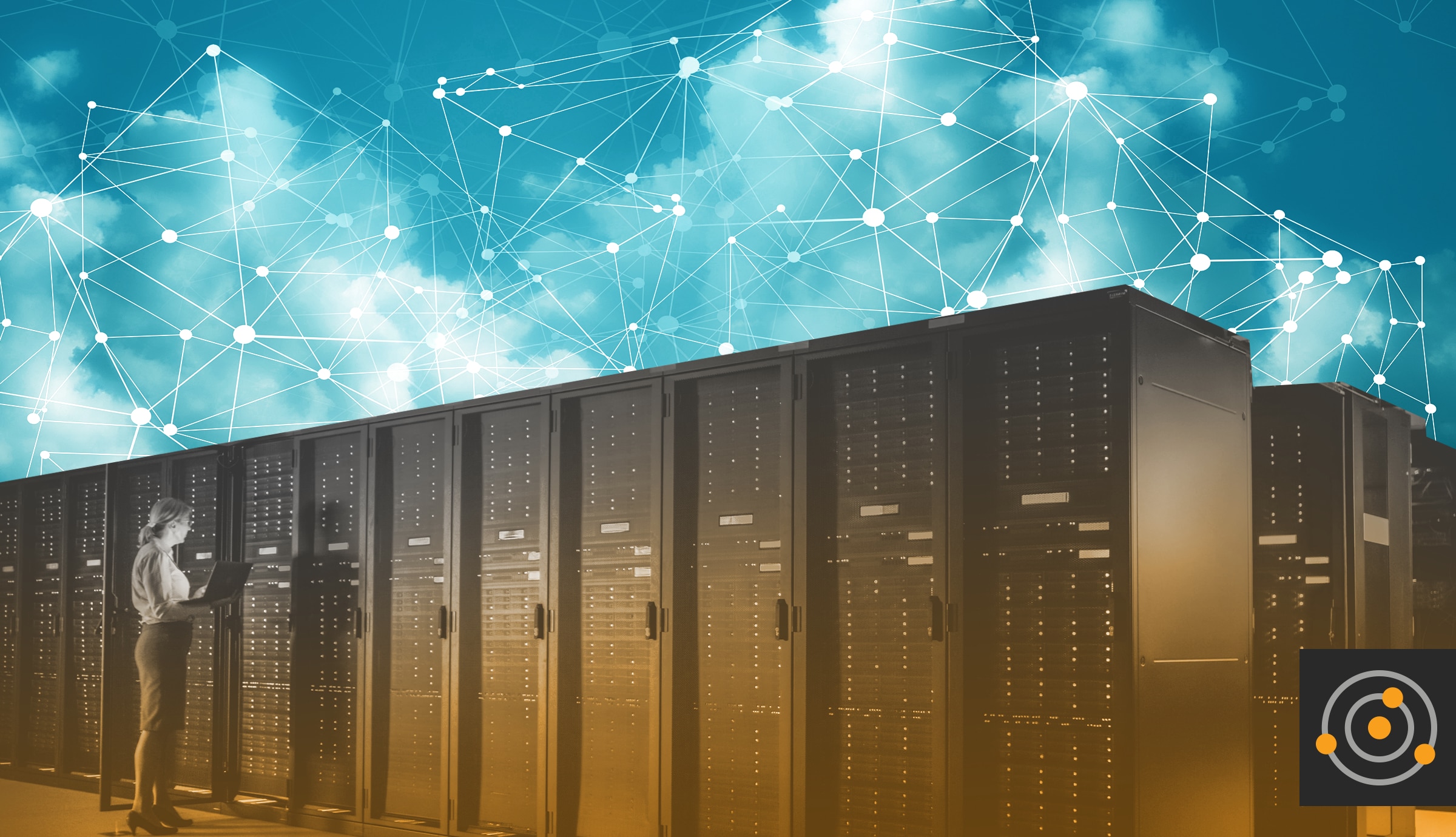Over the past twenty years I have been working in tech, I have seen a variety of products and solutions come and go. For many, it is because they overly complicate something that should’ve been simple. With SolarWinds, I am thrilled to work with solutions designed from the start to be simple for our customers to use. We focus on providing solutions built to integrate with other elements of your network and complement them, so they become more effective.
With the growing industry focus on all things observability, I am particularly invested in how SolarWinds Observability Self-Hosted (formerly known as Hybrid Cloud Observability) can create more efficient processes when integrated with other key IT areas, like improving workflows and speeding mean time to detection/resolution for IT service management (ITSM). ITSM solutions can enable IT operations organizations, specifically infrastructure and operations managers, to better support the production environment. Observability through SolarWinds provides a comprehensive solution designed to integrate data from across the IT ecosystem, including networks, servers, applications, databases, and more across on-premises and multi-cloud environments.
Though ITSM and observability are efficient on their own, together they can provide an unparalleled understanding of where things have or could go wrong alongside the valuable insight needed to fix issues quickly by enabling IT to leverage the benefits of both to proactively mitigate security and performance issues. After all, though we want to avoid issues whenever possible, being able to address issues quickly with the least amount of downtime and interference for end users is incredibly valuable to enterprises.
But before I get too deep into the benefits of combining the two, let’s first look at what makes each one beneficial for your business. Then, I’ll dive deeper into how you can leverage the best of both to achieve a fully transparent observability platform that can provide real value.
What is an ITSM Solution?
Gartner defines ITSM solutions as facilitating the tasks and workflows associated with the management and delivery of quality IT services. Though most heavily used by IT service desks and IT service delivery functions, some non-operations departments (such as HR or facilities) can adapt generic ticket-handling and workflow capabilities for their own use.
Benefits of ITSM Solutions
ITSM solutions can improve an IT team’s customer-facing performance, aligning their actions with the company’s objectives. A centralized way to view service requests, problem management, and configuration changes alongside information about the software and hardware infrastructure can enable IT teams on the help desk to manage multiple support cases based on priority or a predefined set of company rules. It can also allow support agents to link similar incident tickets to a single problem for better management, which can be highly beneficial while handling a high number of support cases.
ITSM solutions can also provide additional control, such as sending alerts or the ability to define custom escalation paths for incidents pending resolution, helping service agents provide more effective support. These tools can also provide built-in reporting and analytics capabilities, allowing IT departments to analyze customer service data or interactions to track various metrics, such as agents’ productivity and response times, via customized reports and dashboards. By regularly investigating and better understanding these metrics, service desk teams can more easily improve their overall IT support capabilities.
What is Observability?
Observability is the ability to provide insights, automated analytics, and actionable intelligence through the application of cross-domain data correlation, machine learning (ML), and AIOps across massive real-time and historical data. A system is said to be “observable” if its current state can be estimated from its external outputs only—not its composition or architecture—the more granular the external outputs, the better the system’s observability is said to be.
Observability tools are designed to collect and aggregate as many metrics as possible from each system component, including infrastructure, applications, serverless services, middleware, and databases, to provide comprehensive views into the internal states of a system at the most critical point: when data is sent to another system for processing and usage. This can provide comprehensive visibility across the full IT stack for improved and effective analysis and troubleshooting. In support of these initiatives, the importance of observability is seen in its primary strength: to enable organizations to move from reactive to proactive postures by providing unified insights from across their IT ecosystems.
Two solutions, better together
At SolarWinds, we saw the need for full-stack visibility years ago and began the journey towards observability with the release of SolarWinds Observability Self-Hosted (formerly known as Hybrid Cloud Observability) for on-premises, hybrid, and in multi-cloud environments. Now, with our recently launched SolarWinds Observability SaaS (formerly known as SolarWinds Observability), we can deliver observability as a cloud-native, software as a service (SaaS) offering.
In addition, we offer SolarWinds Service Desk designed with a modern, SaaS, cloud-based architecture, leveraging our over a decade of service process expertise and best practices to support service management needs while also aligning to ITIL best practices. By combining SolarWinds ITSM solutions and observability, you can:
- Accelerate issue resolution with automated incident creation between SolarWinds Observability Self-Hosted (formerly known as Hybrid Cloud Observability) and SolarWinds Service Desk.
- Eliminate manual efforts, improve accuracy, and maximize agent productivity by automatically converting observability alerts into Service Desk tickets.
- Incorporate asset and configuration data with dependencies to streamline change management processes while attaching configuration items to tickets for record-keeping.
- Reduce alert fatigue and risk with bi-directional communication on incident progression.
Along with many of our other monitoring products, our observability solutions are built on top of our SolarWinds Platform. Our observability solutions can accelerate the mean time to discovery of an issue or potential issue. By leveraging artificial intelligence (AI) and ML-based technologies within observability, these solutions can help further accelerate the mean time to discover an issue, a potential issue, or a forecasted issue as it relates to ITOM-connected use cases by improving the elements around incident response, automation, and driving intelligence for service desk teams. Choosing an observability solution from a single vendor with a proven track record and product portfolio capable of addressing every business need that arises is critical to successfully leveraging all observability can provide.
Mean time improvements equal improved customer experience
Mean time to discovery and resolution is increased by leveraging ITSM and observability to proactively forecast and troubleshoot potential issues that can arise. Though this may not seem immediately important, having insight into any potential issues can allow your team to address them before they happen—and, if unavoidable, you can alert customers of a service interruption, which is another way ITSM + observability insights can help improve the end-user experience and make sure your customers remain satisfied.
Integrated with advanced intelligence, AI/ML, and automation capabilities, ITSM can help support streamlining deflection, correlation, and classification processes. This can be based on an assistive knowledge base, similar ticket correlation, ticket classification, suggested assets, and sentiment analysis. On its own, an ITSM solution can help improve mean time to response. Further automation integration can also allow for quicker process workflow automation, automation rules, and process integration. With an ITSM solution, your team can receive important tickets faster.
However, to improve mean time to resolution (MTTR), integration with observability is necessary. Without observability, you cannot gain a comprehensive view of the intelligence and AIOps insights gathered from your ITSM solution alongside the rest of your environment (and vice versa). With observability, performance alerts and other critical metrics can more easily funnel into automated ticketing and remediation tasks, helping to even further improve mean time to resolution beyond what’s possible with ITSM alone.
SolarWinds and observability, solutions to address your needs
Our first observability product,
SolarWinds Observability Self-Hosted (formerly known as Hybrid Cloud Observability), is a comprehensive observability solution built to centralize data from across an IT ecosystem, including networks, servers, applications, databases, and more, whether located on-premises, hybrid, or in multi-cloud environments. Ongoing product updates continue to increase the visibility and intelligence of the solution, such as improved anomaly-based alerts and security observability integrations. The enhanced AIOps features are designed to allow users to further reduce alert noise and improve alert accuracy, ensuring truly anomalous alerts are flagged resulting in improved response times and less time spent filtering through alerts.
Security Observability in SolarWinds Observability Self-Hosted (formerly known as Hybrid Cloud Observability) is also built to deliver a consolidated security dashboard and enriched node details to help detect, isolate, and alert on critical incidents and events, enabling teams to understand, manage, and reduce cybersecurity risks to avoid business disruption. This security visibility can be extended beyond firmware vulnerabilities and policy violations through integrations with SolarWinds Access Rights Manager, SolarWinds Security Event Manager, and SolarWinds Patch Manager (additional purchase applies).
Launched October 19, our cloud-native SaaS offering, SolarWinds Observability SaaS (formerly known as SolarWinds Observability), is built to unify and correlate data across applications, infrastructure, database, user experience, network, and log events to provide comprehensive visibility and unmatched observability. Born in the cloud, the solution can support complex multi-cloud environments featuring support for cloud-native open-source frameworks (OpenTelemetry) as well as third-party integrations.
SolarWinds Service Desk
SolarWinds Service Desk is a single, unified ITSM solution built to provide the perfect marriage of simplicity and deep functionality. It’s designed to be simple and fast to configure and get into production, with an intuitive, user-friendly UI. Service Desk also has a comprehensive set of advanced AI-powered ITSM and IT asset management (ITAM) capabilities, including IT asset discovery, configuration management, incident management, problem management, change management, and release management. This is all supported by a well-developed, well-functioning configuration management database (CMDB) built to provide proven, easily modifiable, configurable, no-code systems. The built-in AI-powered and automated workflows and ITIL-aligned processes in Service Desk can help enable you to reduce MTTR and deliver quality service no matter how dramatically or often your environment changes.
Learn why a service desk solution is more than just tickets:
learn more about the benefits of ITSM solutions from SolarWinds. 






